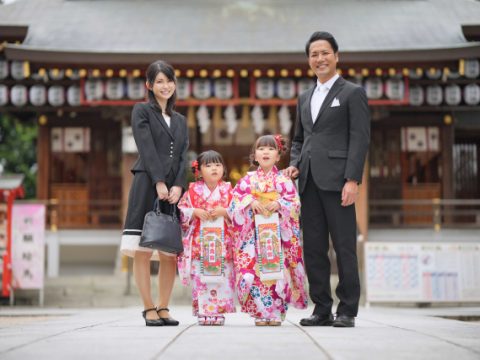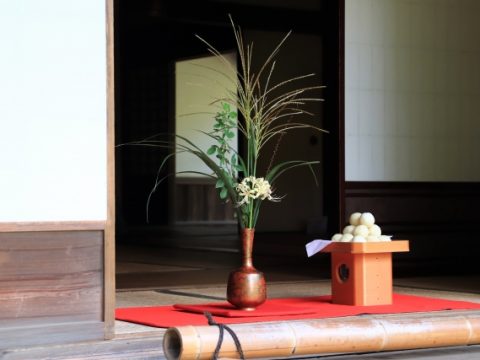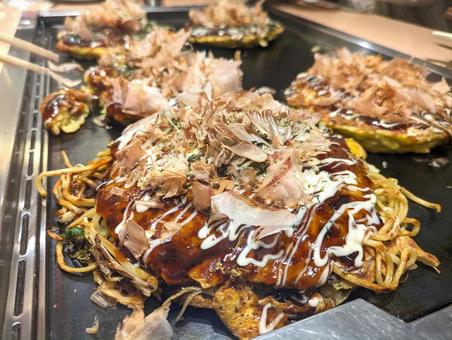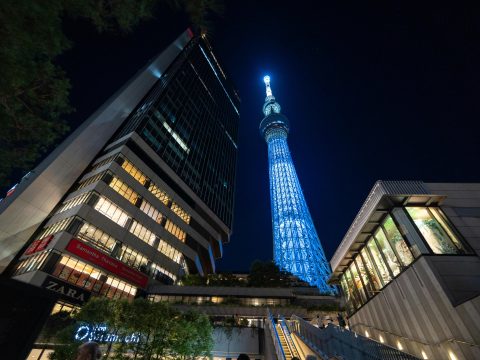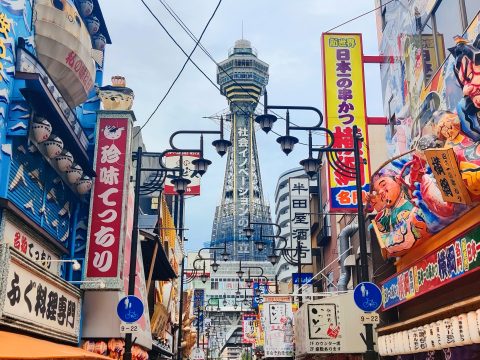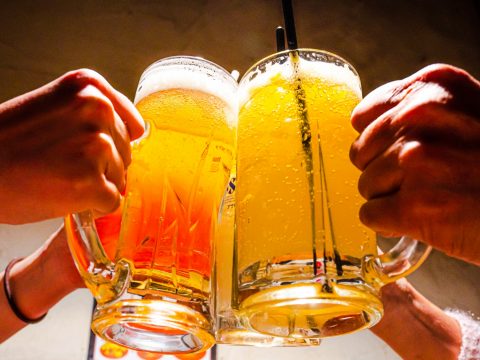Sanma (秋刀魚)
JAPANESE FOODS
07.10.2022

The thick, hot, and humid summer weather is finally ending. During the summer months in Japan, many people lose their appetite due to the weather. All we wanted to eat was something cold and light, such as Somen.
Now the sun feels less intense on your skin, humidity is subsiding, and the air is cooling down; we are getting our appetite back. What’s even better is that it is the harvest season! So many delicious fruits and vegetables are on the market. It is such an exciting season for food lovers.
One of the most popular and famous foods representing Japanese autumn food is Sanma (秋刀魚). So let’s learn more about Sanma, which is currently Shun (旬: meaning “in season”) in Japan.
What is Sanma?
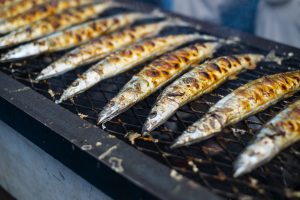
Sanma is a small marine fish also known as pacific saury or mackerel pike in English. It represents Autumn so much that the letters literally mean Autumn (秋), sword (刀), and fish (魚).
Why is Sanma considered an Autumn food?
Sanma usually lives in the northern part of the pacific ocean. When they are in the spawning season, they start to travel south to lay eggs in the warmer climate. They are usually seen in Hokkaido around the end of August. Then travel along the Sanriku coast (三陸沖), the northern part of the main island on the pacific side, between September through October. The warm and cold currents collide in this area, providing more food for Sanma, and resulting in higher fat content and flavors. Thus Sanma is considered in season in Autumn.
How to choose Sanma in the market?
You should get as fresh as possible when you purchase fish. Sanma is one of the easiest fish to tell its freshness in the market.
- The tip of the mouth should be bright yellow.
- Eyes should be clear and not clouded (Look at the white part of the eye).
- The entire body is silvery and shiny.
On top of the three points listed above, look for a plump-bellied one for higher fat content.
What is the best way to eat Sanma?
There are many delicious ways to eat Sanma: Sushi, Sashimi, Teriyaki, Nitsuke (simmered in soy sauce-based broth), fried…etc. But the best way is Shioyaki (塩焼き). Shio (塩) means salt, and Yaki (焼き) means grill. So simply season Sanma with salt and grill, preferably over charcoal. Slow grilling at low temperatures is the best way to cook Sanma. It results in very crispy skin and juicy meat inside. It pairs well with Oroshi Daikon (おろし大根: grated Daikon radish), a splash of soy sauce, and freshly steamed rice which is also in season.
There are many more food in season right now. Check out some articles to explore more autumn foods!
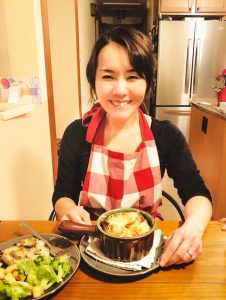
Eri Palmer
Eri grew up in Japan. She came to U.S. as an international student, and decided to stay in the country. Cooking is one of her passions, and she loves to cook Japanese food for her children.
Read previous articles by the writer
Read latest articles
KEYWORDS
- # PICKPICK
- # Resume
- # alcohol
- # Rice
- # Soup
- # winter food
- # Fast Food
- # seafood
- # spicy foods
- # raw food
- # fermented food
- # Transportation
- # MEAT
- # Edo culture
- # suits
- # clothing
- # drink
- # fish
- # seasoning
- # Japanese New Years Foods
- # Toshikoshi soba
- # Osechi Ryori
- # Ozoni
- # Christmas
- # Japanese fusion pasta
- # Wafu Pasta
- # Japanese Hot Pot
- # なべ
- # 鍋
- # Miyazaki
- # Chicken Nanban
- # Karamen
- # Autumn Wagashi
- # Mushi-yokan
- # Imo-yokan
- # Japanese Autumn Fruits
- # Autumn
- # Vending Machine
- # fall
- # dango
- # Chestnut rice
- # saury
- # Mushroom
- # Rice vinegar
- # Japanese condiments
- # 調味料
- # Sake
- # Mirin
- # Soy sauce
- # Japanese Noodles
- # Udon
- # Ramen
- # Yakisoba
- # Soba
- # Japanese Seaweed
- # 海藻
- # かいそう
- # Payslip
- # Training
- # Japanese summer foods
- # 和菓子
- # Wagashi
- # ryokucha
- # 夏
- # 飲み物
- # Ramune
- # ラムネ
- # Pokari Sweat
- # ポカリスエット
- # Calpis
- # カルピス
- # Mugicha
- # ume
- # 梅
- # うめ
- # umeshu
- # job hunting
- # tofu
- # Recruitment in Japan
- # miso
- # Japanese cuisine
- # Yellowtail and bonito
- # Children’s Day
- # Kashiwa Mochi
- # Chimaki
- # fruits
- # Kusamochi
- # Types of Agriculture in Japan
- # bread
- # パン
- # パン屋さん
- # japanese bread
- # shokupan
- # meal blead
- # anko bread
- # 桜
- # さくら
- # cherry blossom
- # visa
- # hanami
- # omotenashi
- # sakura
- # おもてなし
- # Japanese hospitality
- # oshibori
- # wet hand towel
- # hand towel
- # restaurant
- # Commuting in Japan
- # Women-only cars
- # Exit gate
- # japanese train
- # train
- # valentine
- # Japanese sweets
- # 朝食
- # Japanese Breakfast
- # Breakfast
- # Japanese
- # 日本
- # healthy
- # persimmons
- # hoshigaki
- # HR
- # work in Japan
- # jinji ido
- # corporate systems
- # Japanese work culture
- # bento
- # ekiben
- # shinkansen
- # omiyage
- # train station
- # Japanese culture
- # work culture
- # mentaiko
- # umeboshi
- # Japanese snacks
- # potato chips
- # Japanese potato chips
- # Japanese writing
- # seaweed
- # konbu
- # ocean foods
- # shio konbu
- # dashi
- # miso soup
- # food processing
- # pear
- # nashi
- # sweet potato
- # japanese sweet potato
- # stingray
- # satsuma imo
- # food value chain
- # homecooking
- # agriculture
- # Japanese homecooking
- # farming
- # nikujaga
- # shojin ryori
- # meat and potatoes
- # traditional foods
- # comfort food
- # buddhist food
- # manufacturing
- # factory
- # eihire
- # vegetarian
- # food and beverage
- # izakaya
- # yatai
- # japanese festival
- # taiyaki
- # matsuri
- # summer
- # Ikayaki
- # smart agriculture
- # shaved ice
- # kakigori
- # かき氷
- # summer dessert
- # Japan
- # Japanese foods
- # dessert
- # fruit
- # matcha
- # icecream
- # Pikcup
- # Pikc up
- # Pcikup
- # skilled labor visa
- # working visa japan
- # Dineer Table in Japan
- # Japanese manner
- # Japanese food
- # Japanese Table Manner
- # Chopsticks
- # Japanese traffic signs
- # traffic information
- # road rules in Japan
- # chocolate
- # green tea
- # Osaka
- # Work Japan
- # Japanese company
- # ikura
- # sushi
- # nigiri
- # wasabi
- # PCIK
- # PICK UP
- # PICK
- # PICKUP


